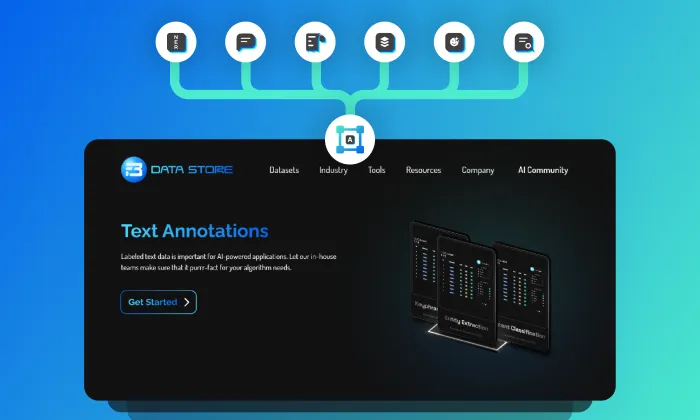In today's digital age, e-commerce businesses are constantly striving to improve the user experience and increase customer satisfaction. One crucial aspect of enhancing the online shopping experience is optimizing search functionality to ensure that users can easily find the products they're looking for. A key strategy for achieving this is through effective product categorization.
So, let’s discuss what product categorisation is and how it can impact your e-commerce business. We will also discuss how we can do product categorization.
What is Product Categorisation?
Product categorization or product classification involves organizing items into logical groups based on their characteristics, attributes, and functionalities. By structuring products into distinct categories and subcategories, e-commerce platforms can streamline the browsing and search process for users, ultimately leading to higher conversion rates and increased sales.
For example, consider an online clothing retailer. They may categorize their products into main categories such as "Men's Clothing," "Women's Clothing," and "Kids' Clothing." Within each main category, further subcategories could include "Tops," "Bottoms," "Outerwear," and "Accessories."
 Product categorisation sounds very simple, right? Yes, it is simple when you have a few items to show but imagine when you have thousands of products and thousands of categories. Will you be able to search your required product on the first try if the ecommerce platform has thousands of products? Now the answer depends on the product categorisation done by the e-commerce platform. So, now let’s discuss the importance of product classification!
Product categorisation sounds very simple, right? Yes, it is simple when you have a few items to show but imagine when you have thousands of products and thousands of categories. Will you be able to search your required product on the first try if the ecommerce platform has thousands of products? Now the answer depends on the product categorisation done by the e-commerce platform. So, now let’s discuss the importance of product classification!
What is the Importance of Effective Product Classification?
Let’s see some of the important things!
Streamlined Browsing
When users visit your online store, they can easily navigate to the section that aligns with their interests or needs. For instance, a customer looking for women's dresses can quickly find the relevant category without having to sift through unrelated items.
Enhanced Search Experience
Product categorization improves the search functionality of your e-commerce platform. Users can utilize search filters or browse through specific categories to narrow down their options, making it easier to find the exact products they're looking for.
Improved Discoverability
Well-organized categories facilitate product discovery. For example, a user browsing the "Men's Clothing" category might come across subcategories like "Athletic Wear" or "Formal Wear," leading them to explore additional items they might not have initially considered.
Cross-Selling Opportunities
By grouping related products within the same category or suggesting complementary items, your e-commerce platforms can encourage users to make additional purchases. For instance, a customer browsing for a laptop may also be shown accessories like laptop bags or mouse pads.
Clear Product Presentation
Organized categories ensure that products are presented in a structured and intuitive manner. Each item is displayed within its appropriate category, reducing clutter and confusion for users.
Overall, effective product categorization is a cornerstone of successful e-commerce operations. It not only simplifies the shopping experience for users but also contributes to increased your customers satisfaction, loyalty, and ultimately, higher revenue for your business.
How Can You Improve Product Categorisation or Product Classification?
So to improve product categorisation you have to build an automatic product categorization AI model that can categorize your products automatically. And to build such a model you have to train a model with high quality training data.
For your automatic product classifier high quality training data will be a set of products labels with required categories. To prepare this training data you will need to follow a few steps!
- First of all you have to define all your required categories and prepare a list of them.
- Then you have to prepare guidelines for related categories and subcategories.
- Once you are ready with the product category list and guidelines, you have to give the product images to data annotators to annotate your data.
- After annotation you can use the product images and labels to train your model.
These are basic steps to create training data to train your product classifier. And once your model gets trained just like other AI models it will do its job to automatically classify your products based on the training data!
Now, as an e-commerce business owner you might face challenges to get a team of data annotators that can understand your use case. In this case, you can rely on FutureBeeAI.
Data Annotation or Data Labeling Services for Product Categorisation
Product categorisation is a crucial task for your business to grow and satisfy your customer. And so, you need high quality data labeling services. FutureBeeAI can help you label your data in many ways. In general you can choose FutureBeeAI’s labeling services to
- Classify your product images
- Or you can categorize your products based on title and description.
We provide multilingual text annotation services for classifying product titles and description. So, get in touch with our team and get some samples to make sure you have chosen a reliable partner for improving your services.



 Product categorisation sounds very simple, right? Yes, it is simple when you have a few items to show but imagine when you have thousands of products and thousands of categories. Will you be able to search your required product on the first try if the ecommerce platform has thousands of products? Now the answer depends on the product categorisation done by the e-commerce platform. So, now let’s discuss the importance of product classification!
Product categorisation sounds very simple, right? Yes, it is simple when you have a few items to show but imagine when you have thousands of products and thousands of categories. Will you be able to search your required product on the first try if the ecommerce platform has thousands of products? Now the answer depends on the product categorisation done by the e-commerce platform. So, now let’s discuss the importance of product classification!


